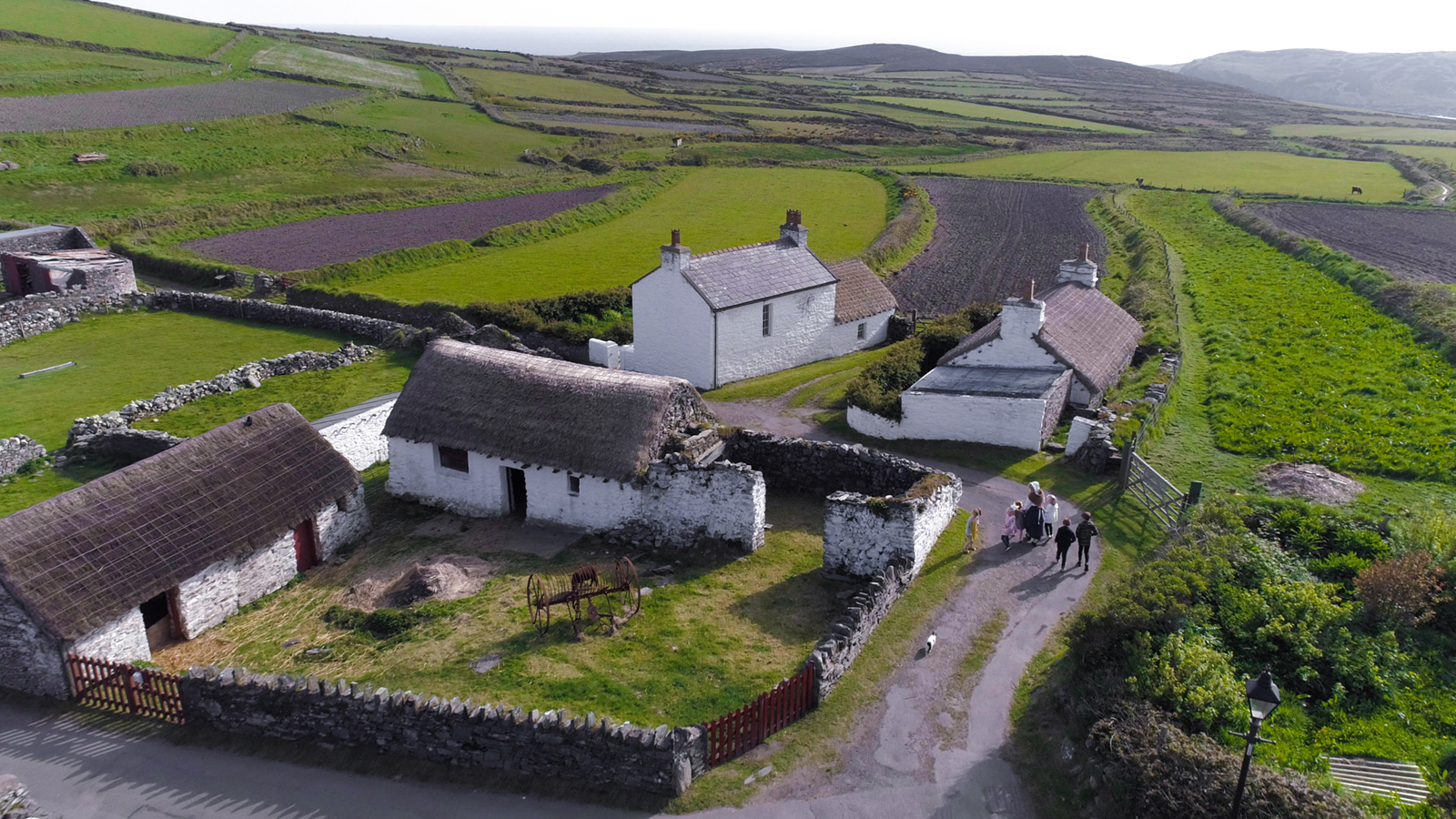There’s far more to the Isle of Man than just stunning nature, and Manx culture is just as diverse as the landscape, with a long history built on a foundation of heritage, tales, and folklore.
With this said, our cherished heritage lives happily alongside the most exciting innovations from the world of arts and culture today, and there’s a unique mix of local, traditional, cosmopolitan, and progressive culture to appeal to everyone.
As an Island of rediscovery and innovation, there’s much to do in terms of cultural immersion. Here we pick the best landmarks and activities that provide ample space to rediscover the history of an island that dates back to 6500BC.
WEST
Peel Castle

An impressive fortress that dominates the west coast, Peel Castle was once home to missionaries, Viking warriors, and kings. Built in the 11th-century, it provides a fascinating look at history, as well as panoramic views of Peel and the Irish Sea.
The site of many spectacular historical finds, the 10th-century grave of the 'Pagan Lady' (a well-preserved example of a Viking necklace) and a cache of silver coins dating from about 1030 are now on display in the Viking Gallery at the Manx Museum (in the east of the Island).
And what castle would be complete without its fair share of ghost stories and tall tales? The Moddey Dhoo is a spectral black dog said to roam the Castle's halls with eyes as bright as fire coals, and the site on which the fortress stands is purported to be the location of Avalon, the lost Arthurian kingdom that sits neatly between myth and utopia.
NORTH
Cashtal yn Ard
Cashtal yn Ard, or the Castle of the Heights, dates back to 2000BC and is a well-preserved chambered tomb situated on raised land overlooking the parish of Maughold.
A megalithic chambered cairn (or a conical heap of stone, to put it simply), it’s one of the largest and best-preserved of its kind in the British Isles.
The site is shrouded in mystery and mythology as the discovery of the strange arrangement of stone slabs has never been explained, though some believe it could have been used as a communal burial place for Neolithic chieftains and their families.
Although the stone cairn has been stripped away, the large, firmly set stones create a dramatic burial site that provides views overlooking most of the parish of Maughold and across the sea to the Lake District.
EAST
Laxey Wheel

If you know any Manx residents, chances are you've heard them gush about the Isle of Man being home to the world's largest working water wheel: it's a fact that we'll be forever proud of, and rightly so.
With a diameter of over 72 feet, it’s a masterclass in Victorian engineering. The Laxey Wheel (or Lady Isabella as she’s locally known) served the mine for 70 years and has become the Island’s most dramatic tourist attraction.
Explore the mines to learn about the lives of Laxey miners, watch the mighty wheel turn, or climb to the top for panoramic views across Glen Mooar Valley.
The Gaiety Theatre
.png)
Steeped in history and tradition, the Gaiety Theatre is one of the finest remaining examples of work from the legendary architect Frank Matcham, and is home to the finest theatre, live music, and stand-up acts to grace the Island.
With tours available throughout the summer season or during the winter by arrangement, this breathtakingly restored Victorian theatre is a must for those looking to understand the history of Manx entertainment.
With many of the original features from its opening in 1900 (plus some newer additions), it’s widely considered one of the finest preserved Victorian theatres in the UK, if not the world, and the tours provide a unique opportunity to see the theatre's working attributes, décor, and machinery in full glory.
SOUTH
Castle Rushen
.png)
Castletown is a picturesque historic town in the south of the Island, and at its heart sits Castle Rushen, the medieval home to the Kings and Lords of Mann.
Initially built for a Norse king in the 12th century and later besieged by Robert the Bruce, the Castle has been a royal residence, a mint, and even a prison. It now serves as a museum and educational centre complete with era-accurate decorations and life-like settings, earning a reputation as one of the best-preserved medieval castles in Europe.
Explore its rooms and furnished chambers, learn from past inhabitants, and discover who shaped its future. Cross the drawbridge and under the portcullis into the Castle and find the Gatehouse with its ensuite garderobe complete with fascinating medieval tales depicted in intricate tapestries.
Towering over the town's Market Square to the south-east and the harbour to the north-east, the Castle's ramparts also provide stunning views in all directions across the town and out to sea. You can also visit the gardens surrounding the Castle, which provide a gentle walk amongst the flowers and a moment of peaceful contemplation.
Cregneash

Settled on an upland plateau overlooking the Calf of Man, Cregneash Village is a stronghold for Manx language and customs, which characterises the crofting way of life. Step inside the Manx cottages to see how crofters lived through stories, skills, and craft demonstrations.
Cregneash Village also offers good sky views in all directions, making it one of the Island’s best dark sky spots, the ideal place to do some soul searching while you stargaze.






https://www.ace4sure.com/JN0-104-questions.html